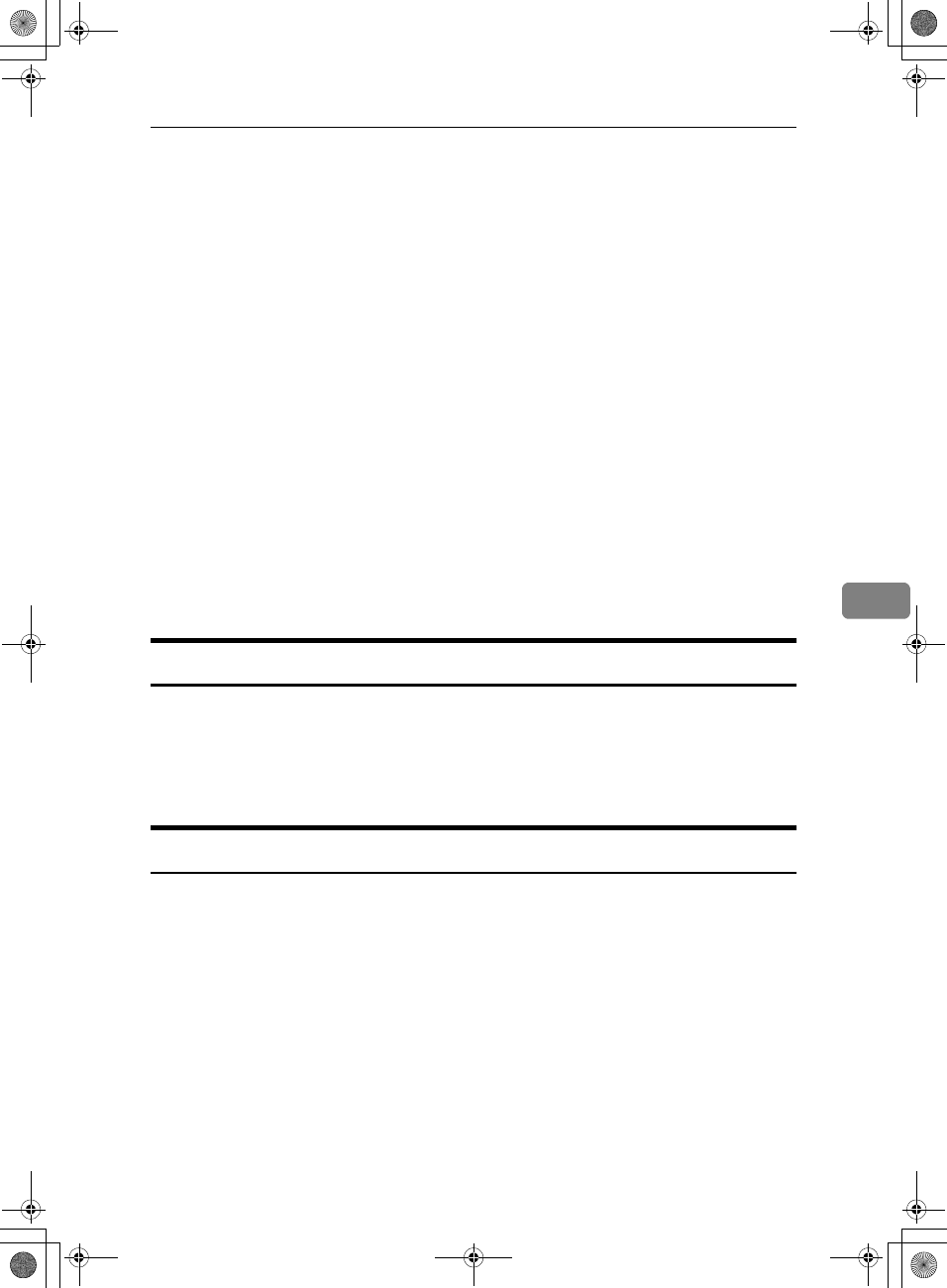
Operation Notes
109
6
• The image density varies according to the printing speed and the room tem-
perature. So, adjust the printing speed or increase the room temperature.
• When you make a lot of prints from a small image, ink might ooze out from
the edges of the master, especially under high temperature and when print-
ing in two or more colours. In this case, make a new master.
• Use ink made within one year. Ink stored for a long period tends to dry slow-
ly and yield lower image density.
• While making a master, do not leave the platen cover or optional document
feeder open.
• In Letter/Photo mode, moire patterns might occur when screened originals
are printed. In this case, make prints in Letter or Photo mode.
• When you use originals with light lettering, edges of the letters might be
printed clearly and the inside of the letters might be light. In this case, in-
crease the image density.
• When marks on the printing paper occur, clean the paper feed roller. ⇒ P.113
“Paper Feed Roller (paper feed tray)”
• If you make a print before the ink on the first print dries, the ink may adhere
to the paper feed roller and soil the print. Before printing on the reverse side
of a printed sheet or overprinting on a printed sheet, be sure that the ink on
the first print is adequately dry. ⇒ P.113 “Paper Feed Roller (paper feed tray)”
Print Paper
• When the paper is curled, stack the paper with the curl face down, otherwise
the paper might wrap around the drum or stains might appear.
• Postcards and the like do not absorb ink well. Offset images might appear on
the rear side of subsequent prints. Solid image originals will cause offset im-
age prints.
Originals
• If there is no margin or if there is a solid image area near the leading edge of
the original, make at least a 5mm, 0.2", margin at the leading edge; otherwise,
the paper might wrap around the drum or the paper exit pawl might become
dirty and cause black lines on prints.
• If you use originals that have bold letters or solid images at the leading edges,
you might get prints with dirty edges. In this case, insert the widest margin
first, or raise the printing speed.
• If you use paste-up originals, select Paste Shadow Erase mode (see ⇒ P.22
“Paste Shadow Erase—Erasing the Shadow of Pasted Originals”) make sure that
the pasted parts hold firmly to the base sheet. If the thickness of the paste-up
originals is more than 0.1mm and the space between the pasted parts is less
than 2mm, 0.08", a shadow might appear on the print.
SilverV-gb.book Page 109 Monday, May 15, 2000 3:32 PM


















